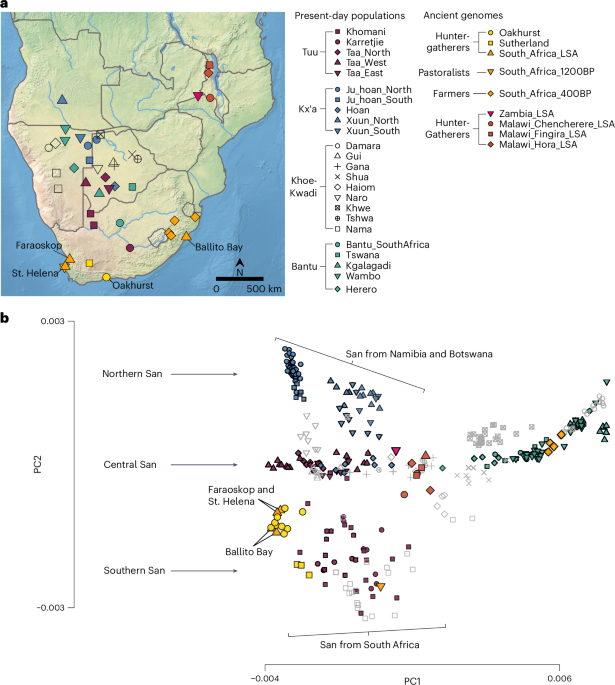Archaeogenetic research of the last two decades has revealed that the Holocene demographic histories of Stone Age Europe, Asia and North Africa were characterized by several episodes of large-scale migrations, either in the form of admixture with newcomers or by total replacement of the established inhabitants.
In contrast, for South Africa, we demonstrate that the local gene pool was characterized by a prolonged period of genetic continuity with no (detectable) gene flow from outside southern Africa.
The earliest individual in our study that yielded aDNA showed a genetic make-up indistinguishable from the later inhabitants of Oakhurst rockshelter, suggesting that this local ‘southern’ San gene pool was formed more than 10,000 years ago and remained isolated from admixture with neighbouring ‘central’ and ‘northern’ San populations or with more distant sources to the northeast, which admixed with San groups in Malawi and Tanzania.
Our data also demonstrate that subtle fluctuations in the craniofacial size of South African LSA coastal inhabitants (for example, between 4,000 and 3,000 bp) were not the product of genetic discontinuity but probably related to changes in environmental factors or population size. Yet, we highlight that the inhabitants of Oakhurst were not a small, bottlenecked population.
This period of ~9,000 years of genetic continuity ends rather abruptly in the migration events which introduced East and West African-related ancestry to South Africa, accompanied by the spread of herding and farming.


